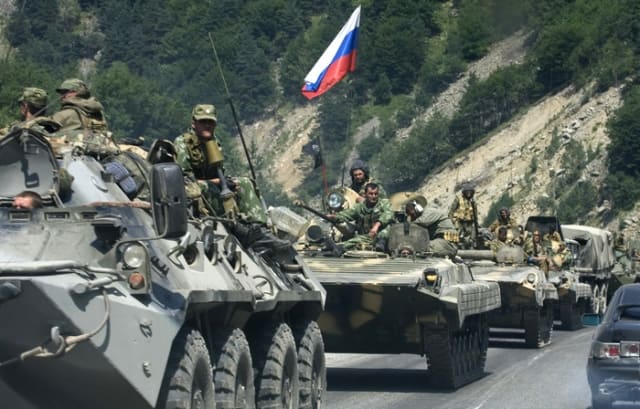According to the Sunday Times, the government’s Integrated Review is at risk of unravelling before it has begun. If its source is to be believed, a series of rows and some “nasty internal politics have raged” over appointments to key panels and timetables. Unfortunately, this comes as no surprise. Every defence review, from Duncan Sandys’ infamous review in 1957 to the last Strategic Defence and Security Review (SDSR) in 2015, has been beset by difficulties of various shapes and forms.
But what is making this Integrated Review so difficult? As Sir Michael Quinlan, former defence strategist and permanent secretary at the MOD, observed just after the end of the Cold War, the process should be simple: “one starts by identifying one’s commitments; one assesses professionally what forces are needed to meet them; one costs these; and then one sends the bill to the Treasury, which pays up.” Unfortunately, it never seems to work that way!
Unwritten Rules of Defence Reviews
In 2015, Paul Cornish, a senior associate fellow at RUSI, and Andrew Dorman, professor of international security at King’s College London, identified ten ‘unwritten rules’ that influence the character and quality of defence reviews, which can be summarised thus:
– Reviews are quickly overtaken by events.
– Governments find it difficult to sustain the logic of their own strategy review.
– Reviews are inevitably underfunded.
– Reviews are constrained by the capability decisions by which they are immediately preceded.
– In any review, certain areas will be considered ‘off-limits’ for party political, domestic or international reasons.
– The unanimity of service chiefs cannot be maintained, as their allegiance to their respective service takes precedence over their commitment to defence overall.
– Allies and partners will attempt to influence the outcome of the review directly and will also be drawn in by the individual services.
– The threat of defence cuts leads to inter-service rivalry.
– The government will be subject to intensive media scrutiny, both prior to and during a review.
– On completion of a review, the government will claim to have gained control of defence inflation and cost overruns.
Both Quinlan’s observation and Cornish and Dorman’s unwritten rules address the ‘what’; however, understanding the ‘why’ is equally as important.
Why are Defence Reviews difficult?
An obvious reason why the Integrated Review is so difficult is that politicians and the military occupy dissimilar worlds, often with different priorities, different aims and objectives, and different ways of doing business. Reviews have subtly different audiences in these different worlds and aspire to achieve subtly different outcomes. What the armed forces are looking for is a once-in-a-five-year opportunity to reset their capability programmes. Indeed, whilst recognising that the MOD’s operating model ‘How Defence Works’ is currently being rewritten, it suggests SDSRs are “an opportunity for the government of the day to restate what its strategic defence and security policy is … to either revalidate what they’ve already said, or to tune it.”
However, what the politician is seeking may be more akin to this thought offered by an anonymous former senior civil servant: “I think that what politicians are trying to do is to come up with something crafty, that spills the least amount of political blood, whilst trying to keep the most number of people [as] broadly happy as possible.” More significantly, SDSRs have become multi-organisation confrontational negotiations that focus on resources and outputs, rather than considering a conceptual view of the application of defence and security capability to meet policy aims. What does this mean?
Recent Reviews have all been Equipment oriented
During the Cold War, defence reviews were always resource-focused, with the MOD seeking the best financial deal it could get and the Treasury striving to minimise military expenditure. However, in the modern era of SDSRs, there are many more organisations involved, with the police, security services, GCHQ and others all seeking a slice of a limited pie. Moreover, all have their own lobbyists and cheerleaders, only too happy to be mobilised to support the cause. When this occurs, the argument inevitably narrows down to what equipment the UK must have, which is driven by competing comparisons, such as whether cyber warfare is a higher priority than high-end warfighting, or maintaining aircraft carriers is more important than maintaining tanks.
The result is the government’s decision-making does not move beyond ‘stuff’. As an example, the 2015 SDSR identified a new force structure – Joint Force 2025, but it was a programmatic headmark, not a concept headmark. It created a task organisation for the new joint force but provided no direction on how the force elements contained therein should actually fight. Without that conceptual vector, there was little to help defence planners develop military capability that would actually be capable of operating against current and future threats.
Conclusion
However they are labelled, there is no doubt that defence reviews, SDSRs, or integrated reviews are difficult. The most “radical reassessment of the country’s place in the world since the end of the Cold War”, promised by the Prime Minister, may be the most challenging yet. Those who will ultimately be making the difficult decisions around future investment in UK’s defence and security would do well to take a little time to understand the history behind these challenges and why they remain relevant today. For, as George Santayana wrote, “those who cannot remember the past are condemned to repeat it.”






